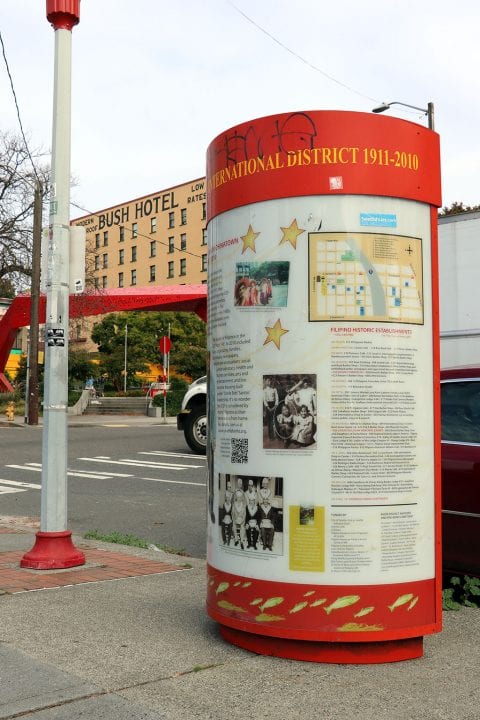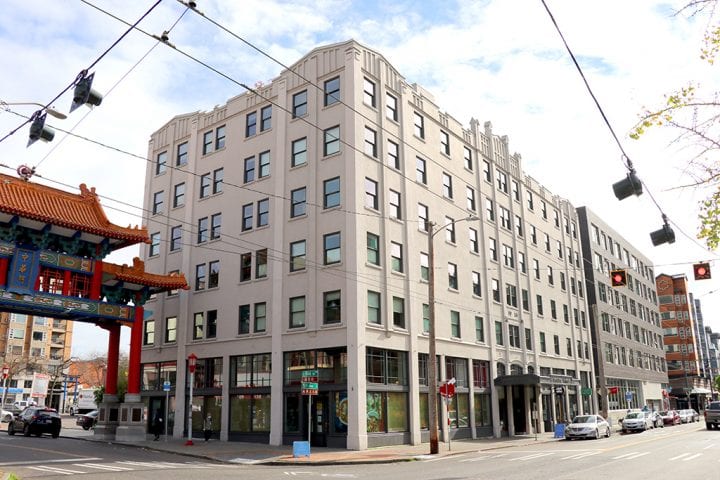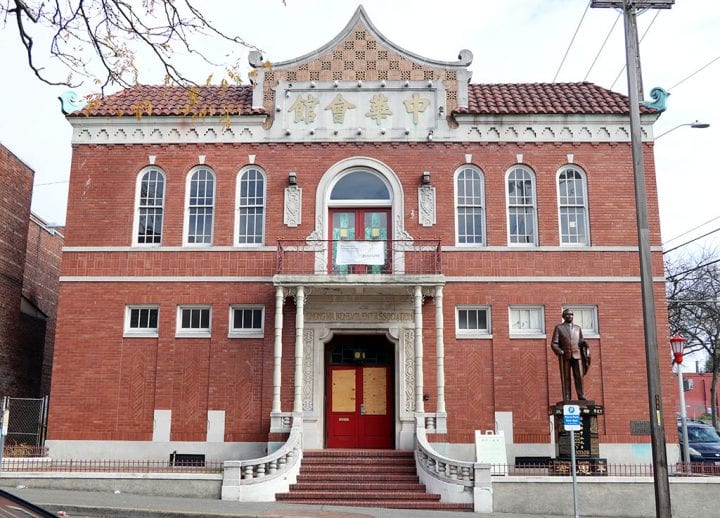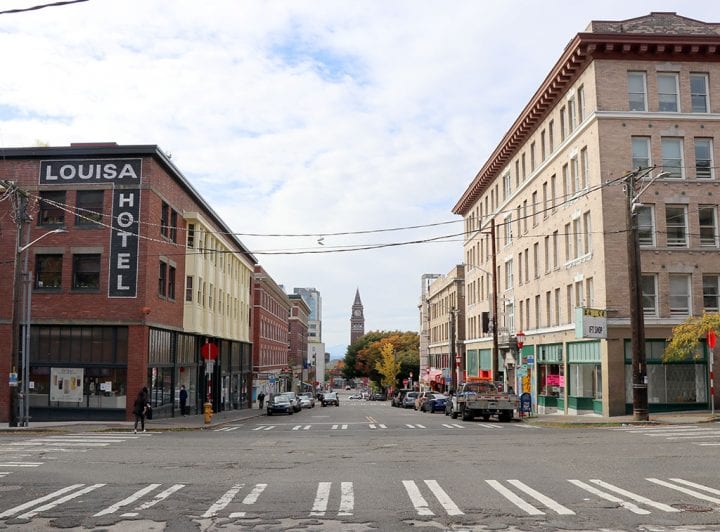Chinatown-International District
by Marie Rose Wong, PhD
-
Seattle’s Chinatown-International District (CID) is a unique multicultural neighborhood. Unlike other U.S. cities, the Asian American community in Seattle occupies a shared geography, where immigrant groups settled with and among one another. In addition to Asian Americans, who now comprise about 60 percent of the district’s population, the neighborhood was settled with Northern, Eastern, and Western Europeans, and Black and Native Americans. Chinese immigrants began settling in lower downtown Seattle in the 1860s, followed by successive waves of Japanese (1890s), Filipino (1910s), and Southeast Asians (1970s). The resulting neighborhood is one that is distinctive in cultural placemaking and cohesive in that the residents and businesses share a common vision of celebrating, protecting, and supporting the neighborhood.
Early Chinese and Japanese settlement was originally located in the northeast corner of the Pioneer Square neighborhood, moving to its current location beginning in 1910. The relocation became a necessity because of urban redevelopment and public works projects that included the construction of the Union and King Street stations, and the Jackson Street Regrade project. Seattle’s CID was built in an area the city had designated in 1892 as a location for illegal and unseemly land uses that included dance halls, gambling and bottle clubs, and sex-worker establishments. For its new Asian American residents, it was a place of home and commercial businesses, many of which were storefronts in residential hotel buildings with spare living quarters in back or upstairs.
Federal laws that restricted Asian immigration and naturalization also prevented them from citizenship and the right to own land and property. Circumventing discriminatory laws was done by purchasing land through the formation of corporate partnerships in which the corporation was the legal owner. Many buildings in the CID core reflect this type of ownership, with two building types emerging — low-rise commercial buildings, and single-room occupancy (SRO) residential hotels that met the demand for affordable central city housing for a population that was comprised primarily of male laborers. In American Chinatowns, Japantowns, and Filipino communities, SROs provided the stage for cultural activity and built expression of an immigrant population. SRO rooms provided a home to transient workers who left for seasonal jobs in canneries, railroad construction and maintenance, lumber industries, and farms, and then returned to live in the CID during the off-season.
The CID is one of eight Seattle neighborhoods to be designated an historic district. As such, any proposed change or addition to this area, which includes anything from color to structural change, is reviewed by city staff and also by a citizen advisory board comprised of people who live, work, or own property in the neighborhood. Within the historic district there is an additional layer of designation by the National Register of Historic Places, which acknowledges the core of single-room occupancy residential buildings and commercial structures. Public art and symbolism, and community resilience and strength are reflected in these buildings and the spaces that help define them. Cultural street signs, murals, statues, landscaping, and the sights, smells, and sounds of ethnic foods combine as testaments to the people who built and are vested in this multicultural neighborhood.
This tour visits the core areas and landmarks of the CID’s Chinatown, Japantown (Nihonmachi), Filipino Town, and Little Saigon.
Tour Stops
Hirabayashi Place
Alki Hotel
Astor Hotel/Nippon Kan Theater
Intersection of 6th and Main
Main Street Annex School and H. T. Kubota Building
Danny Woo Community Garden
Higo Ten-Cent Store
C&T Building
Bush Hotel
Hing Hay Park and the Residential Hotel Core
Filipino American Kiosk
Chinatown Gate
Publix Hotel
Eastern Hotel
Donnie Chin International Children’s Park
Chong Wa Benevolent Association
King Street Landmarks
Chinn Apartments/Hip Sing Building
Chinese Southern Baptist Church
Viet Wah Grocery
Nisei Vets Hall
“Little Saigon Park”
Japanese Language School or Nihon Go Gakko
Betsuin Buddhist Temple
Pho Bac Restaurant
Hirabayashi Place
442 S Main Street

Alki Hotel
200 5th Avenue S

Astor Hotel/Nippon Kan Theater
628 S Washington Street

Intersection of 6th and Main
6th Avenue S and S Main Street

Main Street Annex School and H. T. Kubota Building
519 S Main Street

Danny Woo Community Garden
620 S Main Street

Higo Ten-Cent Store
604 S Jackson Street

C&T Building
316 Maynard Avenue S

Bush Hotel
621 S Jackson Street

Hing Hay Park and the residential hotel core
Intersection of Maynard Avenue S and S King Street

Filipino American kiosk
Southwest corner, 6th Avenue S and S King Street

Chinatown Gate
5th Avenue S and S King Street

Publix Hotel
504 5th Avenue S

Eastern Hotel
506 Maynard Avenue S

Donnie Chin International Children’s Park
700 S Lane Street

Chong Wa Benevolent Association
522 7th Avenue S

King Street landmarks
S King Street between 6th Avenue S and 8th Avenue S

Chinn Apartments/Hip Sing Building
420 8th Avenue S

Chinese Southern Baptist Church
925 S King Street

Viet Wah Grocery
1032 S Jackson Street

Nisei Vets Hall
1212 S King Street

“Little Saigon Park”
1224 S King Street

Japanese Language School or Nihon Go Gakko
1400 to 1414 S Weller Street

Betsuin Buddhist Temple
1427 S Main Street

Pho Bac Restaurant
1314 S Jackson Street


Brought to you by HistoryLink
This tour made possible by generous support from





